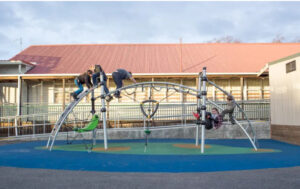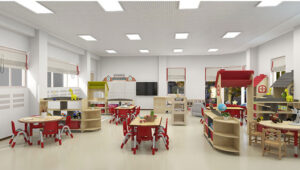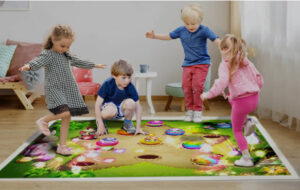STEM and STEAM are two important concepts in the field of education that involve integrating the disciplines of science, technology, engineering, mathematics, and art into the learning process. From preschool to high school, STEM (Science, Technology, Engineering, and Mathematics) and STEAM (Science, Technology, Engineering, Mathematics, and Art) have become integral parts of modern education. These educational models encourage students to explore and develop creative skills, critical thinking, and problem-solving abilities in the fields of science and technology.

In preschool, STEM and STEAM are implemented through interactive activities, games, and hands-on experiments. Students are encouraged to explore basic concepts in science, mathematics, and technology through activities such as building, sorting, experimenting, and shaping. Additionally, STEAM incorporates the artistic element, encouraging students to express creativity and artistic appreciation through activities like drawing, sculpting, and performing.
In elementary and middle school, STEM and STEAM are promoted through integrated lessons. Students are encouraged to apply their knowledge of science, technology, mathematics, and art to solve real-world problems. Projects, experiments, and group activities become an essential part of the learning process, fostering teamwork, enhancing communication skills, and problem-solving abilities.
In high school, STEM and STEAM continue to play a significant role in preparing students for future orientations. Specialized courses in science, technology, mathematics, and art provide students with deeper knowledge and opportunities for independent research and project development. Furthermore, students are encouraged to explore interdisciplinary fields, creating a combination of science and art, fostering creativity and diverse thinking.
STEM and STEAM programs not only create diverse and engaging learning environments but also prepare students for future careers related to science, technology, engineering, and art. By applying these educational models, students have the opportunity to develop the necessary skills to face and succeed in the current diverse and rapidly changing world.
| 1. STEM: STEM stands for Science, Technology, Engineering, and Mathematics. STEM emphasizes the correlation and integration of these disciplines, encouraging students to apply knowledge from these fields to solve real-world problems, develop critical thinking, creativity, and problem-solving skills.
2. STEAM: STEAM expands on STEM by adding Art to the list of fields. STEAM recognizes the importance of art in stimulating creativity, artistic thinking, and exploring the creative aspects of STEM subjects. Integrating Art into STEM helps create a more diverse and enriching learning environment, encouraging the fusion of creativity and engineering. |








